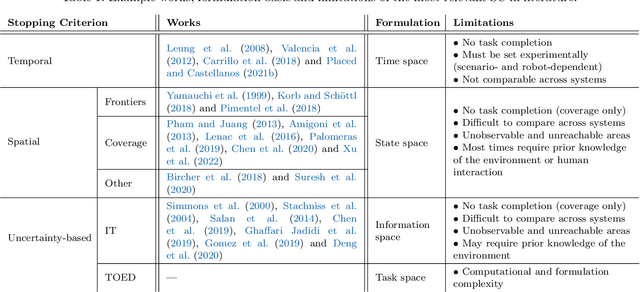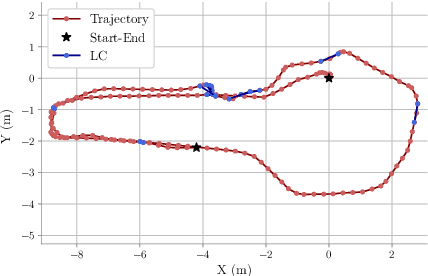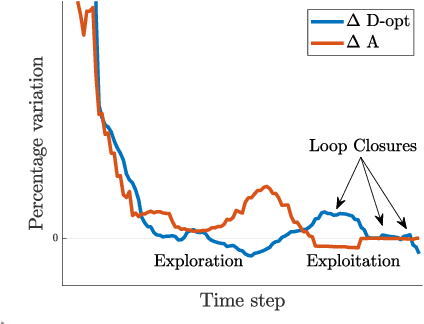Enough is Enough: Towards Autonomous Uncertainty-driven Stopping Criteria
Paper and Code
Apr 22, 2022



Autonomous robotic exploration has long attracted the attention of the robotics community and is a topic of high relevance. Deploying such systems in the real world, however, is still far from being a reality. In part, it can be attributed to the fact that most research is directed towards improving existing algorithms and testing novel formulations in simulation environments rather than addressing practical issues of real-world scenarios. This is the case of the fundamental problem of autonomously deciding when exploration has to be terminated or changed (stopping criteria), which has not received any attention recently. In this paper, we discuss the importance of using appropriate stopping criteria and analyse the behaviour of a novel criterion based on the evolution of optimality criteria in active graph-SLAM.
 Add to Chrome
Add to Chrome Add to Firefox
Add to Firefox Add to Edge
Add to Edge